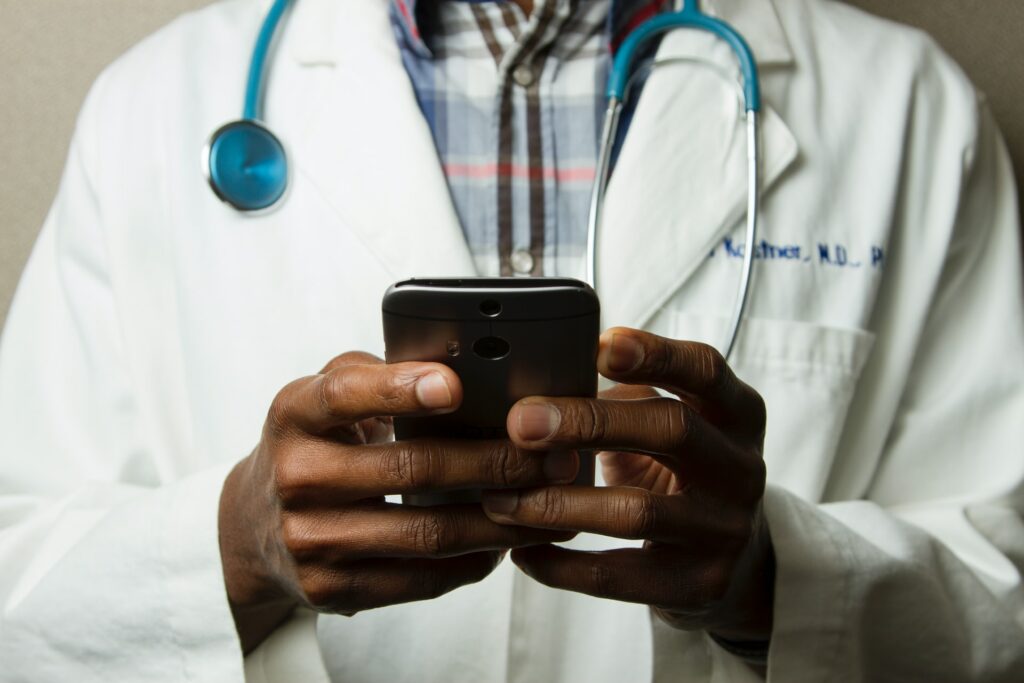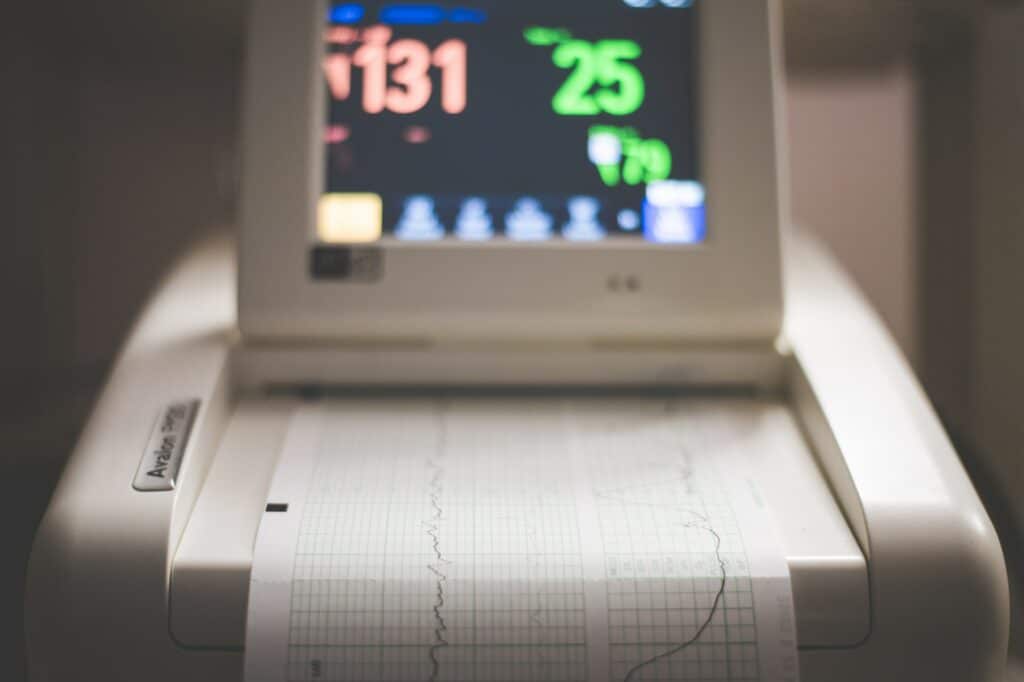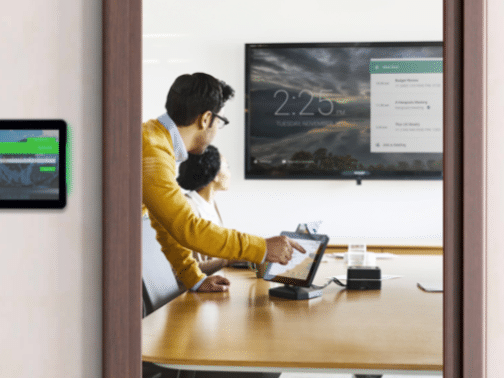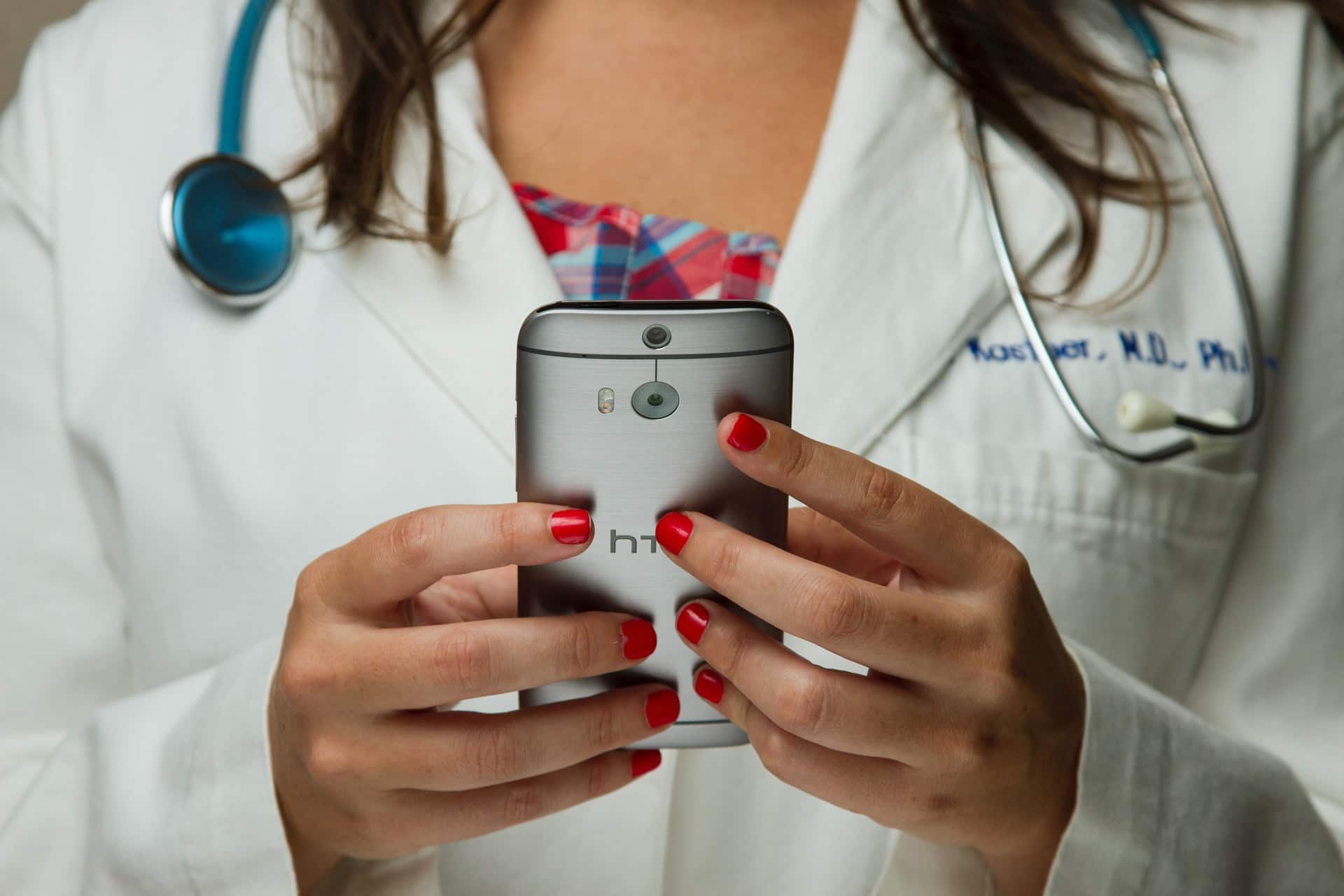Asset Tracking has come of age
Asset Tracking has come of age
How asset tracking will be used in 2022, and how modern wireless IoT tracking technologies compare.

By Kewal Gupta
17th December 2021
Asset tracking in 2022 will deliver so much more than simply knowing the location of resources and materials. Real-Time Location Systems (RTLS) already use a wide range of IoT devices and platforms to deliver intelligent asset insights across almost every vertical and market sector.
Businesses of every scale are recognising that asset tracking solutions can help them with their automation and business transformational goals, resulting in improved efficiency and productivity.
Asset tracking solutions are already providing invaluable insights into process efficiency when applied to resources, machinery, equipment, materials, and products.
Vehicle tracking is perhaps the most mature asset tracking use case that many will be familiar with. Telematics and vehicle tracking has also experienced a revolution in recent years with increased accuracy, greater resilience and larger data packets being broadcast. Businesses like Microgenie use GPRS enabled devices to allow full scale fleet tracking and telematics solutions. Sophisticated algorithms supporting OTA configuration of independent frequencies for geo-location and data upload, while in motion or static. Solutions are GPS enabled for outdoor precise geo-location, with the ability to fall back to GSM cell ID positioning when GPS is not available.
In general, IoT asset tracking platforms are being deployed at increasing scale across manufacturing, warehousing, transport, retail, hospitality, healthcare, military, and many other sectors to gain insights into asset status. Data from these platforms is being sent back into workflows to deliver improved processes and cost savings.
New systems are also helping to bring multiple asset tracking devices and their technologies under the control of a single platform, so business owners can more easily monitor a wide range of assets and resources. Platforms such as the IoT MicroGenie help businesses monitor and control almost every IoT tracking device from security systems and lighting to condition monitoring. It does this by acting as an IoT Hub, taking control of IoT devices and allowing users to gain actionable insight, management and control over their entire estate.
Now, Channel Partnerships in collaboration with Tech Data is helping organisations at every scale take full advantage of the latest innovations in asset tracking and IoT. The partnership brings together the leading platform and device manufacturers to help organisations solve their workflow challenges – from sophisticated telematics solutions to asset wayfinding and social distancing.
The benefits of asset tracking in 2022
These are among the first, and perhaps most valuable, effects of being able to monitor asset location and react in real-time. Asset tracking can make an instant impact on:
Inventory management
Business owners can know exactly how many pieces of inventory they have in stock, where they are and their condition in real-time.
Equipment maintenance
Organisations can arrange equipment maintenance schedules based on use (often measured in distance, time, and performance history) rather than via calendar dates.
Purchasing decisions
Accurate stock levels can be reported to help managers avoid over purchasing. Equally, a business can more accurately estimate stock purchasing requirements when inventory data is aligned to real-time stock levels, equipment availability and usage rates.
Compliance
Asset tracking platforms can automatically deliver historical data to help document compliance against applicable regulations.
Safety and security
Asset tracking deployments can be augmented with geofencing capabilities to limit or control access to sensitive or hazardous areas and materials.
Loss prevention
Geofencing settings applied to assets can alert managers when valuable assets move outside a predefined area. Additionally, workers can more easily locate an item of machinery or equipment within a large workspace or estate.
Customer experience
Accurate asset tracking can improve order picking, shipment processing and delivery timeframes – resulting in fewer customer issues, returns and cancellations.
Industry examples of asset tracking
Asset tracking platforms are increasingly being deployed to help organisations improve efficiency and productivity. Essentially, by tracking assets with greater accuracy and by leveraging greater insights into the condition of those assets, organisations can greatly improve performance.
The growth in asset tracking IoT devices and their related platforms and technologies is driving a revolution in organisational improvements, thanks to the ability to accurately track the flow of materials and people within an environment.
Here are some examples of how modern asset tracking and IoT platforms are changing the face of business today:
Supply chain management
Sensors with temperature-reading capability can document those goods in transit are always kept in optimum conditions. Additionally, asset tracking can support the chain of custody and avoid costly claims alongside accurate compliance reporting.
Manufacturing & Warehousing
The real-time reporting of assets within a process can identify potential bottlenecks and optimise the movement of goods and materials – as well as people and resources.
Accurate reporting of asset positions within a warehouse (including height) can help improve picking. Additionally, measurement of dwell times can streamline order processing and improve operational efficiency.
Healthcare
Asset tracking across a hospital estate makes medical equipment easier to locate, streamlining wait times and avoiding critical situations where essential equipment cannot be located.
Wireless asset tracking technologies compared
There are several location-tracking and communications technologies that can be applied to asset tracking sensors. Beacons and tags need to be compatible with your chosen platform’s digital standards, but in 2022 these are increasingly becoming agnostic – many platforms can accommodate devices that use almost any of the available technologies.
Each communication technology has its strengths and weaknesses, so potential buyers need to be aware of the various features and where each is best applied. Often it is best to gain the advice of your platform provider. A consultancy-led approach will provide you with more insights and recommendations – but the following outline might help when entering a discussion about the various options:
RFID for asset tracking
Radio-Frequency Identification, or RFID, uses radio waves to broadcast and detect an asset’s location. There are two main types of RFID – Active and Passive.
Passive RFID is not typically used for asset location purposes since devices using it are not equipped to broadcast their location.
Active RFID tags have their own power supply and can broadcast a signal. The assets’ location is calculated by measuring the signal strength as the tag moves around an environment.
Strengths of RFID in asset tracking
With RFID, no line-of-sight (LOS) is needed, and RFID signals are multidirectional. RFID delivers a signal that is robust, stable and resistant to interference. Additionally, RFID signals are easily picked up by readers and sensors.
RFID chips are usually compact and can be integrated with almost anything, making them ideal for discreet applications and portability.
Weaknesses of RFID in asset tracking
RFID signals are easily intercepted with an RFID reader, making them unsuitable for applications that demand data security and privacy compliance.
RFID is also an older platform with poor standardisation – making it more complex to integrate into existing platforms.
Ideal use cases for RFID in asset tracking
- Demanding environments and harsh conditions
- Discreet application and smaller items
- Standard asset tracking applications involving inventory, warehousing, shipping, etc.
- Simple access control solutions
Bluetooth Low Energy (BLE) for asset tracking
Bluetooth Low Energy (BLE) has quickly become one of the more popular communication technologies in asset tracking. BLE offers a wide range of features, and its growing popularity has ensured a vast ecosystem of devices and platforms that support it. BLE offers low energy use, interoperability, and stability.
Like RFID, BLE establishes the location of an asset by measuring signal strength – however, it can also geolocate based on the proximity of other BLE sensors within an array. Indeed, the accuracy of location data is improved by having more devices within a single environment.
The extremely low power consumption of BLE devices means that batteries in beacons and tags can last for five years or more, depending on the settings used. BLE also functions extremely well in both indoor and outdoor environments.
BLE has been adopted by the IoT asset tracking industry as a firm favourite, and as such it has been standardised to work with mobile devices including phones, tablets, and computers along with other consumer and industrial goods.
A major reason for its attractiveness as a platform for asset tracking is the enormous global penetration of BLE as a standard across a huge range of devices. Its ability to interact with phones, tablets and computers automatically creates an enormous network that BLE can leverage.
Strengths of BLE in asset tracking
Since BLE is already installed within millions of consumer devices, it can be used by anyone with a modern smartphone or tablet that has a suitable application installed. There is no need to buy additional hardware, which makes the cost of BLE significantly lower than RFID.
BLE can be adopted for use with sensors to report temperature, motion, vibration, impact, humidity, and more alongside its native location and positioning technology. It can be easily integrated with other technologies and cloud services – and easily deployed for simple use cases that can expand in the future as business needs to grow.
Weaknesses of BLE in asset tracking
Scaling BLE and preserving accuracy requires adding transmitters to create a denser network, which can be expensive in large deployments.
Ideal use cases for BLE
- Anything that demands tracking and location data such as wayfinding and navigation.
- Mapping workflows and asset movements through a business process
- Asset location in larger environments such as hospitals, schools, campuses, and airports.
- Temperature-sensitive asset tracking, such as cold-chain food processing
- Geo-fencing and security situations that require assets to remain inside or away from certain environments.
Ultra-Wide Band (UWB) for asset tracking
Ultra-Wide Band (UWB) offers extreme energy efficiency in IoT devices – beyond that of BLE. Its super efficiency is achieved by transmitting very short signal bursts on demand, instead of constantly or more regularly. With some signal bursts lasting a millionth of a second, power usage is minimal.
The wide spectrum of the UWB signal is strong and can carry very large amounts of data in short bursts. The signal can also more easily penetrate obstacles, such as walls and ceilings. The “low power spectral density” of a UWB signal will not interfere with other signals in the same frequency spectrum – so, devices can be tracked in very close proximity to each other.
Furthermore, the short burst nature of UWB transmissions makes it much easier to encrypt from both the transmitting asset and the receiving platform.
An interesting use case is the UWB enabled Social Distancing Tag from Alis Tech. This tag will alert employees if they come within close proximity of each other. The wrist tags can alert the user with vibration and flashing options, while adjustments to the distance measured can be updated easily.
Strengths of UWB in asset tracking
UWB offers highly accurate positioning because of its wide spectrum signal and the burst power of transmission. Despite the very low power consumption, the size of the data packets means that more accurate location and position data can be transmitted, down to 10cm.
Additionally, because the data packets can be much larger, adding encryption to your data is much easier. Data privacy, compliance and security are much easier to manage with UWB.
Finally, UWB offers reliable data transmission with almost zero interface – so the risk of packet loss, signal collision and corruption are minimised even within very crowded environments where multiple assets need to be tracked and monitored.
Weaknesses of UWB in asset tracking
Until recently there have been fewer UWB based IoT tracking platform options for buyers to choose from, and the costs of deployment were high. More recently UWB has seen a growth in popularity and support is gaining, however, it is still less adopted across tracking platforms than BLE.
Ideal use cases for UWB
- Environments that demand very low energy consumption
- Cases where data privacy, compliance and security are a priority
- Environments where multiple wireless platforms and other devices are already deployed
- Where ultra-precise location information is needed
- Cases that demand transmission of larger data packets
- Can be used for vehicle tracking and may be suitable for autonomous vehicles in the future (UWB-Based Tracking of Autonomous Vehicles with Multiple Receivers)
NBIoT for asset tracking
Unlike UWB, Narrow Band Internet of Things (NBIoT) operates across a very small part of the wireless spectrum – but broadcasts in multiple frequencies simultaneously. Like UWB however, it uses very little power because it does not broadcast its signal continuously or even very often.
NBIoT is designed to handle many small transmissions sent infrequently. The lack of a constant signal makes it a poor choice for real-time tracking updates on things that are in constant motion. However, NBIoT is aimed primarily at broadcasting status updates and infrequent two-way communications.
NBIoT is compatible with existing cellular networks and as such it offers unique scalability and accessibility for those users that demand huge coverage. Designed to be able to handle massive amounts of small individual connections, NBIoT is positioned to sweep up a new generation of connected devices and smart accessories in the coming years.
Strengths of NBIoT in asset tracking
NBIoT offers ultra-low power consumption. It is also capable of handling very large amounts of connections at once, making it ideal for IoT devices. Additionally, because NBIoT leverages existing cellular networks it will be much easier to grow a widely dispersed platform of connected devices.
Weaknesses of NBIoT in asset tracking
Like UWB, NBIoT is not ideal for any asset tracking that involves constantly moving or highly mobile devices (such as vehicle tracking). Additionally, NBIoT offers a very limited data packet size, so use cases can be limited.
Ideal use cases for NBIoT
- Updates from IoT-connected accessories and devices
- Tracking across very large areas, even country scale
- Periodically taking measurements from many locations, such as meter readings or occasional status reports
SUMMARY
Beacons, tags, and other sensors form the backbone of asset tracking platforms, and these devices are often empowered by different location-tracking technologies. Each platform approaches the challenge differently, but they are all focused on digitally tracking resources and materials in an environment. Many platform manufacturers are now providing hardware agnostic deployments, meaning sensors are compatible with multiple digital standards.
Several technologies are available for the purposes of asset tracking, each with its strengths and weaknesses. Those attributes make them suited for particular use cases in different industries. Since they function in different ways and achieve essentially the same result by taking different technical paths, the small differences between them can make them ideal for one context and a poor choice for another.
The range of choices and standards can be confusing, especially since there is so much crossover between them. However, organisations such as Channel Partnerships are here to help you navigate the sea of device and platform options. We can help you source the best solution for your future needs – without over specifying or adding unnecessary complexity.
Contact the team at Channel Partnerships today to get further insight into IoT and asset tracking solutions that can improve your organisational productivity.
Latest articles
February 26, 2025
Channel Tools partners with Zerotier to provide enterprises with Secure, Scalable Connectivity Solutions
Channel Tools partners with Zerotier to provide enterprises with secure, scalable connectivity…
February 23, 2025
Channel Tools Partners with Mimo to expand into Innovative Display and Tablet Solutions Market
Channel Tools Partners with Mimo to expand into Innovative Display and Tablet Solutions Market
December 18, 2024
Channel Tools Partners with Sclera to deliver Advanced AI-driven Asset Management
Aicuda World isn’t just a participant in the field of AI and security, it’s a thought leader,…
Join our Partnership Program
There are many benefits partnering with us. Simply complete the form at the bottom of this page to discuss how the program can sky-rocket your visibility in any technology market place. We have huge experience in the creation of new channels – and we can create introductions, leads and business opportunities for your sales teams.
Want to know how a Channel Partnership could benefit your business?
Complete the form below and one of our team will call you back:
Technologies to watch in healthcare in 2022
Technologies to Watch in Healthcare in 2022

By Kewal Gupta
7th December 2021
We evaluate three cutting edge technologies that help healthcare organisations remain agile and safe.
In the wake of the pandemic, almost every organisation has had to accommodate operational adjustments. This is particularly evident in the health sector where medical practitioners and technology solutions have become even more key to ensuring patient safety whilst maintaining ongoing care services.
By aggregating data, providers can identify trends, enabling them to better predict patient behaviours and organisational needs.
In intensive care situations, systems can combine data across multiple devices that aren’t connected, creating an impressively complete picture of that patient for their clinician. And all that data collected? It can be captured, stored, and analysed to drive better predictions in the future.

Telehealth – the digital communication solution for healthcare
One obvious solution that has revolutionised the delivery of health services in the last two years is Telehealth. These systems are delivering medical care, provider and patient education, health information services, and self-care solutions via a huge range of digital communication technologies.
Telehealth and Telemedicine
The terms telehealth and telemedicine are often used in the same context. Telehealth includes a wide range of technology-driven healthcare activities and services, while telemedicine is essentially the remote diagnosis and treatment of patients via technology.
An example of telemedicine might include a diagnostic service located in another country or time zone to maintain 24-hour radiology capabilities.
Telehealth on the other hand includes every part of the healthcare system that can be conducted through digital communications technology, including:
- Scheduling and delivering remote GP appointments
- Triaging patients remotely before they enter a care facility
- Remotely monitoring patient vital signs, so the patient can remain at home
- Analysing and acting on real-time patient data from a remote location
- Providing advanced medical support to teams in remote locations.
Real-time patient data, available anywhere
Telehealth solutions have quickly expanded beyond phone calls, and video consultations. Provider solutions now include portals and remote monitoring systems to deliver more complex guided workflows for both patients and clinicians.
One such provider is WiCis Health, a platform that uses cloud-based workflows, video-conferencing, and live vital signs to deliver real-time patient care.
WiCis Health is a mobile-first HIPAA compliant Telehealth and Telemedicine system that delivers advanced medical care remotely and to the point of need.
The solution allows doctors to see patients and monitor their vital signs remotely – whether they are in the same building or a completely different country. Customisable data analytics dashboards allow clinical care staff to follow guided workflows and monitor the progress of patients. Essential data can be gathered via wearable technologies that stream real-time information to and from the platform.
Deployable within 48 hours, the WiCis Health platform can scale to support thousands of patients.
Increasing use of Telehealth technologies
Telehealth technologies such as the WiCis Health platform are being deployed via mobile health apps (mHealth), video and audio technologies, digital imaging, remote patient monitoring (RPM), and store and forward technologies.
The rapid adoption of telehealth has greatly helped to expand access to healthcare at a time when traditional in-person visits have had to be avoided due to the significantly increased risk to patients, healthcare providers and communities. According to a May 2020 McKinsey report, at least 20% of all health spending could easily become virtual via Telehealth solutions in the near future.
See the WiCis Health Telehealth Platform in action
To learn more about WiCis Health, contact the team at Channel Partnerships to discuss your needs. We will help to set up a meaningful demonstration of the solution and a follow up with an experienced telehealth solutions expert.

IoT and IoMT Asset Security Solutions for Healthcare
According to a recent study, ransomware attacks on healthcare organisations are having life-and-death consequences. Until now, ransomware has typically been discussed in terms of lost revenue or operational impacts – but for the first-time mortality as a direct result of cyber threats is taking centre stage.
Currently, healthcare providers around the world are under siege from ransomware attacks. To date, 67% of healthcare providers surveyed said that they had been victims of ransomware attacks, while 33% have been hit twice or more.
What’s more, the root cause of the related data breaches was equally liable to be due to an insecure medical system or IoT device.
While medical facilities and hospitals are likely to have active firewalls and anti-phishing solutions in place, IoT protection often fails to gain the attention of over-worked IT staff and security managers.
Most IoT and IoMT (Internet of Medical Things) devices cannot be updated or patched in the same way that a computer can. Many devices run the operating systems and firmware that they originally shipped with. As these devices inevitably increase the attack surface, cybercriminals will take advantage by directly targeting these unguarded entry points.
How hospitals can extend threat detection and responses to connected medical devices
Now for the first time, there are solutions, in the form of a new breed of IoT Attack Detection and Response systems created solely for connected healthcare devices. These solutions give hospitals the power to identify, contain and mitigate threats on IoT and IoMT devices – directly protecting the health, safety, and lives of connected patients.
Hospitals now have the immediate ability to identify and quarantine any device demonstrating malicious or suspicious behaviour. Once the device has been identified and isolated it can be given full remediation and recovery solutions.
One such solution is the Healthcare Attack Detection and Response solution from Cynerio.
Key features of Cynerio’s IoT Attack Detection and Response for Healthcare include:
IoT Attack Alerts
The system alerts hospital IT managers to device behavioural anomalies, complemented by attack detection data from other implementations, machine learning and dozens of vulnerabilities and threat intelligence feeds collected from global sources.
IoT Attack Containment
Any attack observed on a device can be immediately quarantined to give IT Managers a secure way to further remediate the incident without impacting service availability or patient care.
IoT Attack Investigation
Collect detailed forensics on all IoT devices along with the connections between them – and investigate device metadata using deep packet inspections. This forensic data can then be ingested by your Security Incident and Event Management (SIEM) platform to enrich any attack investigation you are carrying out across your IT infrastructure.
IoT Attack Response
The system shares its intelligence on any threats with other IT security solutions that hospitals are using – such as threat detection and isolation tools. IT Managers can actively prevent device exploitation with micro-segmentation that safely limits device communication to the bare minimum so that attacker reconnaissance, lateral movement and ransomware shutdown of devices is blocked.
The Cynerio system also provides real-time help from support agents alongside reporting on PHI exfiltration, risk exposure over time, and step-by-step instructions broken down by device and attack.
See the IoT Attack Detection and Response for Healthcare system from Cynerio in action
To learn more about Cynerio, contact the team at Channel Partnerships to discuss your needs in the first instance. We can help you identify the solution capabilities that are most relevant to your needs and arrange a tailored demonstration. We can then provide a full proposal that is customised for your healthcare environment.

Managing unstructured data explosion in healthcare
Medical images and data files contain untold value for healthcare organisations, yet they are rapidly exceeding the limits of their own data centres.
Hospitals have shifted to digital media for medical imaging. Digital PACS, digital pathology and other systems are all generating and storing petabytes of medical imaging data. This ever-expanding data is pushing the limits of on-premises and cloud storage costs. It is also challenging the ability to manage the availability of clinical data to medical staff.
To make matters worse, healthcare providers typically must retain medical imaging files for several years; they may even have an enterprise-wide policy of retaining medical data forever, because clinical researchers may need access to the data indefinitely.
The cost of managing all this data is growing exponentially.
Keeping data is expensive for hospitals because they must pay not only for the primary storage but also for backups and replication of the images for DR.
IT managers and storage teams are attempting to use cold data tiering to the cloud. However, tiering options from storage vendors are often not viable because of costs, limitations on how much data can be tiered, and egress costs on data access.
Additionally, cloud gateway solutions can create a new data silo – and as such any archived files might not be accessible to clinicians from their original locations.
Intelligent data management for healthcare
New data management solutions for healthcare providers can now deliver tiered data storage with immediate access capabilities for medical images not used for 90 days or more. Unused data can now be transparently tiered to cloud-based object storage.
Moving to durable object storage eliminates the requirement for backups since the service automatically stores two or more copies of the data. Researchers, pathologists, and technicians can now continue accessing the tiered images exactly as before.
With intelligent data management solutions, Digital Pathology, PACS, VNA and other applications can continue to work as before without requiring any special integrations or changes to their workflows. Data is moved transparently and in real-time behind the scenes – making sure that any data is delivered seamlessly from cold storage.
Data management cuts cost significantly by transparently tiering from network-attached storage to cloud
There are many choices today for data management solutions, but healthcare providers need solutions that work seamlessly with their existing storage systems and imaging applications. They also need solutions that eliminate vendor lock-in so they can access data and move it to different vendor platforms without causing higher costs or onerous processes.
In the case of healthcare, data management solutions must integrate effortlessly with digital imaging application workflows to automatically move older images from NAS to resilient object storage in the cloud-based on policies.
The leading solution is the Unstructured Medical Data Management system from Komprise.
With the Komprise solution, user experience and workflows remain unchanged. Clinicians, technicians, and other healthcare staff don’t have to change how they search and access files. There is no re-training required and there is zero disruption to their existing workflows. Data is automatically tiered to more affordable cloud storage transparently, without changing where or how clinical staff access that data.
Komprise also ensures continued interoperability with any medical imaging application without any proprietary interfaces or changes. This frees IT managers to add data management to their existing infrastructure without disruption.
The Komprise solution eliminates cold data – such as unused images – not just from local storage but also from backups and DR. The smart solution offloads the entire image file from local storage to durable tiered cloud storage – proportionately shrinking the backup and DR footprint.
The Komprise solution also enables cloud-native access and global search solutions, providing the ability to create a virtual data lake. The long-term benefits of this approach include research, analysis, and compliance.
Take a tour of the Komprise data management solution.
To learn more about Komprise and their unique data management solution for healthcare, contact the team at Channel Partnerships in the first instance. Our consultants can help you assess the solution for your environment and will ensure that you see a relevant and accurate demonstration, followed by a proposal that fits with your use case.
In conclusion
In the years since COVID-19’s emergence, health systems have introduced machine learning tools that can quickly scan CT and X-ray models for the presence of COVID-19 in lungs and created virtual intensive care settings to monitor and manage patients.
From convenient consultations at home to dynamic monitoring and management of real-time patient information, the healthcare sector is being boosted by analytics and the full spectrum of digital technology.
The push for rapid innovation amid COVID-19 has resulted in new solutions that provide patients with faster, more accurate and complete care.
Remote care, sophisticated data management and security are becoming the standard for healthcare IT Managers. These benefits are helping us reimagine what healthcare will look like tomorrow.
With these advances, it’s not hard to imagine a future where remote management of chronic conditions is routine, where patients are protected from cyber threats, and where patient data is immediately accessible to those that need it most.
For more information and insights into additional healthcare technologies please contact the team at Channel Partnerships. We can help you evaluate healthcare technologies from leading and emerging and specialist vendors.
Latest articles
February 26, 2025
Channel Tools partners with Zerotier to provide enterprises with Secure, Scalable Connectivity Solutions
Channel Tools partners with Zerotier to provide enterprises with secure, scalable connectivity…
February 23, 2025
Channel Tools Partners with Mimo to expand into Innovative Display and Tablet Solutions Market
Channel Tools Partners with Mimo to expand into Innovative Display and Tablet Solutions Market
December 18, 2024
Channel Tools Partners with Sclera to deliver Advanced AI-driven Asset Management
Aicuda World isn’t just a participant in the field of AI and security, it’s a thought leader,…
Join our Partnership Program
There are many benefits partnering with us. Simply complete the form at the bottom of this page to discuss how the program can sky-rocket your visibility in any technology market place. We have huge experience in the creation of new channels – and we can create introductions, leads and business opportunities for your sales teams.
Want to know how a Channel Partnership could benefit your business?
Complete the form below and one of our team will call you back:



